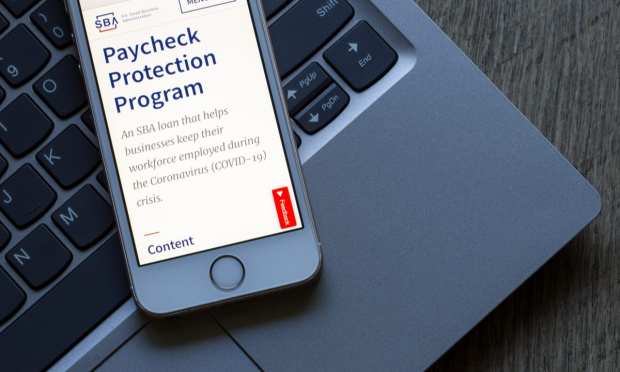PPP Round Two Aims To Clean Up Issues From Round One

The second round of federal funds to small businesses is already on its way out the door, with the Paycheck Protection Program (PPP) opening up $284.5 billion for PPP loans, with $137 billion set aside for “second-draw” loans for firms that need help beyond their initial loan.
The funding has been modified the second time around with an eye toward supplying funds to minority-, women- and veteran-owned businesses. Those firms got a two-day head start when the PPP portal reopened, provided they apply through community financial institutions (FIs). Firms that apply for a second loan must have fewer than 300 employees, must be able to prove they have used (or mostly expended) their first loan, must be able to demonstrate a drop of 25 percent in their gross annual receipts for any quarter in 2020 compared to the same time period the year before, and must still be open for business.
Moreover, certain types of federal funding preclude others — venues that apply and receive Save Our Stages grants (another segment of the second-round stimulus) cannot apply for additional PPP loans. The second round of PPP loans is similarly structured to the first in terms of which types of business can apply, though the ceiling on what can be borrowed is lower. First-time PPP loans max out at $10 million; second-draw loans are capped at $2 million.
Like their forebears, the second-round loans are also forgivable — provided they are put toward payrolls costs (at least 60 percent of all borrowed funds), operating expenses, repairs, contract payments and upgrades to personal protective equipment (PPE) reserves. Second-draw loan funds must also be used within eight to 24 weeks of receiving the loan in order to be forgiven.
The question is, will the adjustment made in this second round clean up the various difficulties from the first round? The initial guidance stated that any small firm that needed the funds could apply, regardless of their access to other funding. However, when larger small businesses like Shake Shack and the Los Angeles Lakers were early PPP recipients, many questioned whether those funds were really serving the stated intention of helping struggling small businesses.
“I think everyone’s heart was in the right place when they came out with this loan program. They wanted this to work; they wanted to get more people employed and they wanted to save small businesses. But … I think as time has gone by, it’s become clear that this is a lot more difficult to deal with than they had originally thought,” Judie Rinearson — a partner, payment group leader and co-chair of global FinTech and blockchain groups at the K&L Gates law firm — noted in a conversation with Karen Webster, Ingo CEO Drew Edwards and Planters First Bancorp CEO Dan Speight.
That initial outcry led to a rules change midstream when it came to collecting PPP — it was suddenly on firms to prove they didn’t have access to alternative streams of capital. They also attached potential criminal liability on firms that an audit determined didn’t deserve the funds they collected. At that point, roughly 30 percent of SMBs that had collected PPP funds thought better of it and returned them.
Ingo Money was one of those firms. It wasn’t that they didn’t have use for it, Edwards noted, but they are a payments company — and accidentally triggering some kind of federal investigation would be a business-ending event for them.
“Our ability to sign the next contract with the next top five banks just torpedoes as long as an investigation is going on. It’s the kiss of death if the federal government is investigating you for potential wrongdoing,” Edwards said, noting that Ingo was far from unique in this regard among FinTechs and other heavily regulated digital service providers.
Meanwhile, firms that had a legitimate use for the funds were backing away for fear of triggering criminal liability, and firms that really shouldn’t have been able to collect at all were forging bravely forward, according to NBC reports. A recent SBA Inspector General report noted “serious concerns about improper payments” in the PPP program, including money going to companies barred from doing business with the federal government again.
“The troubling findings by the SBA Office of the Inspector General are unfortunately consistent with the Select Subcommittee’s report in September that SBA approved hundreds of PPP loans to ineligible borrowers who had been debarred or suspended from federal contracting,” U.S. Rep. James E. Clyburn, D-S.C., chair of the House Select Subcommittee, noted in a statement to NBC. “Treasury and SBA must immediately improve oversight and accountability to ensure that taxpayer dollars are not squandered.”
The PPP funds, even in their flawed first round, were critical to SMBs nationwide. PYMNTS has been polling SMBs during the pandemic, and according to spring 2020 data, those that had received PPP loans report being more optimistic than before government aid began flowing. The 43.2 percent of SMBs that had received funds were “sure” they would be able to survive over the long haul. That, however, was back in May — before the second surge triggered more closures nationally and globally. How many SMBs could have used another infusion of cash to maintain that certainty remains to be seen.
